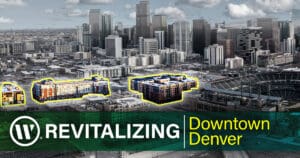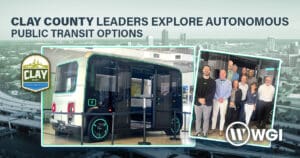Public participation efforts are a crucial component to all planning projects. Public involvement is a two-way communication process between the public and a governmental agency aimed at incorporating the diverse citizens’ views, concerns, and issues into the decision-making process. For instance, downtown residents are likely to have different perspectives and insights into issues like traffic or housing than their suburban counterparts or agency staff. Involving residents in the planning and decision-making process gives them a voice in shaping the future of their community and helps to grow a sense of ownership and community pride. Notably, their input can bring issues to the forefront and lead to measures that would otherwise not be pursued, positively shaping a project’s outcome.
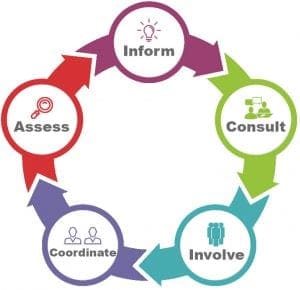
Early and ongoing outreach builds trust within the community and brings transparency to what can be a complicated process. Public involvement activities that prove most valuable and successful are those that are easily accessible, relevant, and appropriate. The initial step to public involvement begins with the development of a Public Involvement Plan (PIP); a comprehensive guidebook that identifies, implements, and documents strategies to reach the people who will be affected or who may be interested in a particular project or proposed plan. A PIP should consist of attainable goals that inform, consult, involve, coordinate, and assess the public involvement process. A PIP seeks to ensure that a community’s ideas and concerns are included in the decision-making process throughout the life of a project and that information is provided in the most effective manner. A living document, the PIP must be developed with enough flexibility to adapt to changing conditions and situations.
It is well known that people become more involved in a project when they feel that they are directly influencing its outcome. Working with the public to gain insight into the community can be accomplished through both traditional and non-traditional methods. Conventional approaches to outreach, such as formal public meetings, work best on small-scale or non-contentious community improvements. Conversely, for large-scale projects, ones to which the community has a strong connection, or for those projects that are not well understood, more intensive and personalized approaches are necessary for a successful outcome. For this reason, to engage more residents, land or business owners, students, workers, visitors, seniors, low-income families, and the future leaders (Millennials and Gen Z), the engagement process must also employ less customary and more innovative outreach tools that go outside of a meeting room to places that these groups frequent in their day-to-day lives. Interactive methods that reach a wider audience include hosting booths with interesting exhibits (and “freebies”) at outdoor community events, creating activities and programs to engage future leaders in their communities’ planning endeavors, reaching out to visitors at senior centers, sharing information online through the creation of websites, capturing the attention of all age groups through the use of social media, and monitoring hotlines residents can utilize to ask questions and share concerns.
A highly popular public involvement technique is the charrette process. This is an intense brainstorming session led by professionals including citizens, planners, designers, and others to collaborate on a vision, producing practical solutions to specific problems and drawing on consensus building. They are fast-paced and result in precise ideas that are clearly stated using easily understood text and graphics. Charrettes should not be used as the sole source of community engagement, but as one element of a larger public outreach process. Engaging stakeholders in a combination of one-on-one, focus groups, and advisory panel meetings yield more varied and specific results, as they create a more intimate environment for sharing of information. While these strategic small-scale and personal engagements tend to take more time, they can help increase the number of people involved in project planning and implementation.
In our highly digitized world, storytelling is an innovative way to convey a strong message. Often, this involves relatable plots that are short, visual, and meaningful. While written text moves into our short-term memory, visuals move to our long-term memory, creating a lasting connection. For this reason, storytelling should be used in planning processes to better engage residents and help form a more interesting dialogue. Rather than asking residents if they’d prefer a roadway with a sidewalk or wider lanes, storytelling allows planners to understand how citizens actually use the road in a more honest way. This leads to more effective results.
While it is difficult to draw all residents to public meetings, creating websites is an effective public engagement technique that provides all of the information relevant to a project, offers opportunities to submit inquiries, and displays videos from public meetings. Websites can incorporate an interactive GIS application allowing residents to locate information about planned construction, inform them of general improvements that will be made, share information, and provide points of communication.
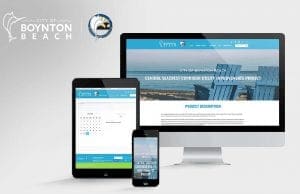
Hotlines are another popular form of outreach, providing a way for residents to get answers to questions and share concerns. Hotlines address the accessibility requirements for public involvement as they can be set up in multiple languages. They provide an immediate response as hotline phone numbers can be retrieved via smartphones at any time and location. This public outreach tool acts as an arm between municipalities and their citizenry, ensuring that projects are implemented efficiently, and community members feel comfortable with the work being conducted.
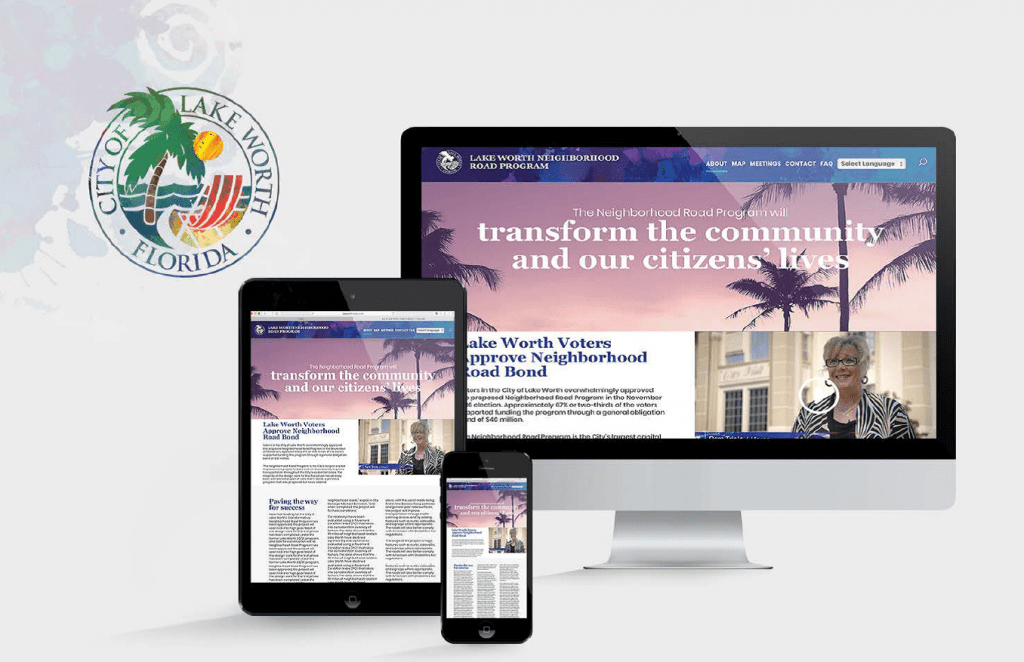
Public involvement’s ultimate goal is to provide the community opportunities for inclusion in the decision-making process. A comprehensive PIP creates an easily understood process that ensures efficient use of resources and the commitments to the public are honored. Implementation of a PIP builds community trust in the process and impacts the success of projects.













